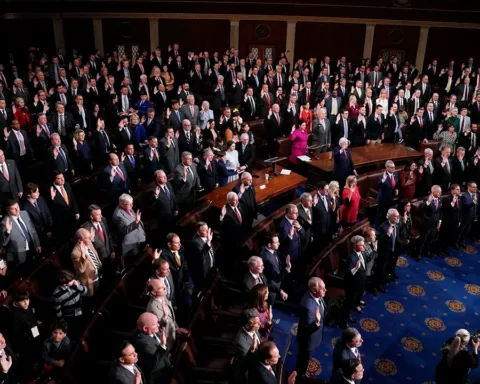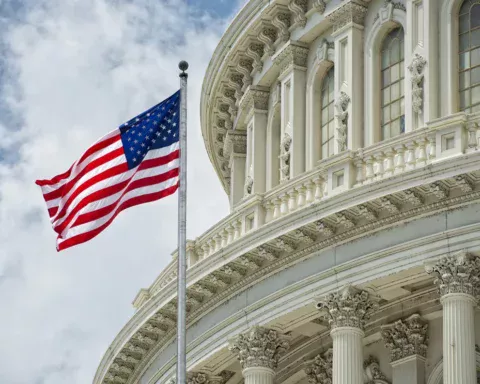Brooking – And just as some of his Republican colleagues may vote against him in that trial, many of Trump’s longtime real estate colleagues have now decided his behaviors in office were too egregious to warrant continued support.
Trump’s “lender of last resort,” Deutsche Bank, is reportedly refusing to do any more business with him or his company, according to The New York Times. Brokerage giant Cushman & Wakefield announced they would no longer handle leasing agreements for Trump properties. The commercial real estate company JLL is no longer handling the sale of the Trump International Hotel in Washington, D.C. Signature Bank, which has also financed Trump projects in the past, closed his accounts and announced they would not do business with any member of Congress who voted not to certify the Electoral College results for the 2020 election. Multiple industry political action committees have suspended donations to those members of Congress as well.
Lenders’ separation from Trump is a recognition that financial support enabled his anti-democratic behaviors. However, the real estate industry has been complicit in white supremacy and racial discrimination long before Trump took office. Will the repudiation of Trump lead to a wider reckoning?
Land ownership is the primary source of wealth and means to access capital in America. And for over a century, the real estate industry has implicated itself deeply in white supremacy by backing and profiting from racist practices that created and still sustain the nation’s unequal land and home ownership.
Redlining, racial housing covenants, predatory lending, and neighborhood-destroying highway construction have all contributed to a wealth gap in which white families have roughly 10 times the net worth of the average Black family. This lack of wealth and ongoing discrimination has throttled Black individuals’ capacity to acquire, retain, and grow assets that are critical to well-being. For instance, during the last two decades, even as overall U.S. homeownership has grown, there has been a catastrophic loss of homeownership in key cities that have large shares of Black homeowners.

How is this happening in the 21st century? It’s been widely documented that the formal association between neighborhood, race, and insurance risk established by the federally backed Home Owners’ Loan Corporation in the 1930s altered the valuation, market dynamics, and long-term viability of Black neighborhoods—many of which consequently experienced significant change, ranging from decline to displacement, over the last three generations. This damage has been concretized into neighborhoods in ways large and small. For example, today’s appraisal methods and price comparison models extend and reinforce racialized harm because they operate on a comparison basis that assumes a level playing field where there never was one.
Even with the prohibition of overt racial discrimination and oversight, the housing market is structured to disproportionately exclude Black and brown households. For example, our zoning codes and building practices are streamlined to deliver large single-family homes at the urban fringe. Thus, for decades, the very largest houses (four or more bedrooms) have grown as a share of all housing inventory, while smaller configurations have stagnated or declined. Because people of color are far more likely than white people to be first-time rather than repeat homebuyers, a mass of housing inventory weighted against attainable starter homes disproportionately favors households with higher concentrations of generational wealth to pay bigger down payments. Over 6 million Black and brown millennials would be considered mortgage-ready if there were any attainable homes for sale in prime locations.

Meanwhile, today’s de facto housing market segregation—financed by anti-Black lending practices—makes it possible to target Black and brown communities with predatory loan products while withholding retail amenities. At the same time, Black neighborhoods pay a “segregation tax” in the form of lower housing values.
White neighborhoods, on the other hand, pay higher housing cost premiums to maintain their exclusiveness. This premium enriches not just the homeowners, but also land speculators, builders, lenders, insurers, and tax jurisdictions—in other words, the real estate industry. The industry’s role in eroding Black wealth and profiting from racial division across decades and decades has been much more destructive to our democratic experiment than Trump’s four years in office.
So if the real estate industry is reckoning with Trump, it should also address its legacy of discrimination in housing devaluation, lower rates of homeownership, and higher interest rates among Black and brown homebuyers. In divesting from these formal and informal white supremacist systems, the industry can instead invest in historically disenfranchised people and places, including through reasonable protections for renters and new programs, policies, and models that expand Black and brown property ownership.
On January 6, Donald Trump attacked the legitimacy of American democracy. The real estate industry’s divestment from him is a start, but does not begin to address the entirety of the anti-democratic and racially biased real estate ecosystem. To truly advance democracy, the real estate industry must divest from white supremacy and develop anti-racist systems that encourage both integration and inclusion.






